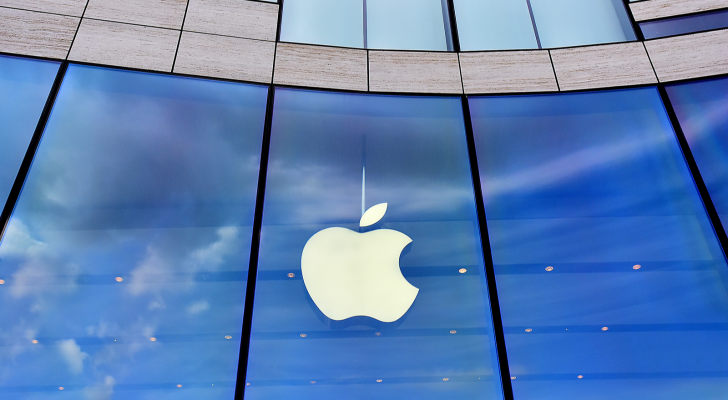Is Apple’s Push Into the Buy Now, Pay Later Space a Mistake?

Source: Vytautas Kielaitis / Shutterstock.com
While Apple (NASDAQ:AAPL) unveiled several new features, services and products at its annual Worldwide Developers Conference earlier this month, it was its plans to launch a buy now, pay later (BNPL) service that attracted the most attention. But Wall Street’s response has been muted, with AAPL stock down around 6% since the news broke.
Called Apple Pay Later, the new service will enable U.S. consumers to break the cost of a purchase into four equal payments over a six-week period without incurring any interest or fees.
Many analysts were quick to criticize the move as a bridge too far for the consumer electronics giant and a distraction from its core businesses. So, has Apple bitten off more than it can chew with its BNPL service?
InvestorPlace - Stock Market News, Stock Advice & Trading Tips
Regulators Look to Crack Down on Predatory Lending
Buy now, pay later is not a new concept. Department stores used to offer “layaway,” which allowed customers to pay for items in installments over a set period of time.
These days, a growing number of companies are offering BNPL services as an alternative to traditional credit cards and other consumer loans, and they are primarily targeting younger consumers and minority groups who often use the service to pay for small ticket items such as clothes, shoes and, in some cases, even meals. Companies at the forefront of the BNPL industry include Affirm (NASDAQ:AFRM), PayPal (NASDAQ:PYPL), Block (NYSE:SQ) and privately held Klarna.
The industry has come under scrutiny for engaging in predatory lending practices that are ensnaring young adults and teenagers, as well as minority groups, in an endless cycle of debt and related fees and charges. A New York University marketing professor, Scott Galloway, recently published a scathing article about the BNPL industry in New York Magazine with the headline “Buy Now. Pay (and Pay, and Pay, and Pay) Later.”
This paragraph from the article sums up the growing problem with BNPL: “Consumer debt jumped $52 billion in March, the largest increase on record. In California, 91 percent of consumer loans made in 2020 were BNPL loans. More than 40 percent of Gen-Z consumers will have used BNPL by the end of the year, the highest penetration of any age group. And now those debts are going bad.”
The article goes on to detail how the business model behind BNPL is not panning out the way the companies involved had hoped. For instance, Galloway notes, “Klarna racked up $700 million in losses last year, and 65 percent of it was from credit defaults. Affirm lost almost the same over the past 12 months, while its marketing expenses tripled to $427 million. Any hope of profitability depends on overextended consumers somehow making their payments and continuing to mash the BUY button.”
The U.S. Consumer Financial Protection Bureau launched an inquiry into BNPL programs late last year based on concerns that they are leading people to accumulate excessive amounts of debt.
So far this year, the stocks of the publicly traded BNPL leaders have been eviscerated. AFRM is down 80% year to date, while PYPL has fallen 62% and SQ is down 60%.
Whether this is due to concerns about their business model, increasing regulatory scrutiny, the broader fintech sell-off, or all the above, it begs the question, why would Apple want to step into this mess?
Apple Continues Its Push Into Finance
Apple’s foray into the buy now, pay later space is part of the company’s growing push into the realm of finance. Its Apple Pay service allows consumers to use their iPhones to make quick payments. In 2019, Apple launched a credit card in partnership with investment bank Goldman Sachs (NYSE:GS).
With Apple Pay Later, which is set to launch in September, the tech giant has a few things working in its favor. First, because it can be integrated with Apple Pay and Apple Wallet, it won’t require a third party to facilitate transactions. Second, Apple is able to fund the BNPL loans using the $51.5 billion of cash that’s sitting on its balance sheet.
Understandably, Apple’s push into the BNPL space has other companies quaking in their boots. And clearly, Apple sees an opportunity in the space.
The global market for BNPL exploded last year, more than tripling in size to reach $120 billion, according to market research firm GlobalData. And it is forecast to grow at a 26% compound annual rate moving forward.
Some analysts say the push into BNPL is Apple’s attempt to provide yet another service that will keep consumers in the company’s orbit for longer. Others say Apple will mine the BNPL loans for consumer data.
But is the potential for bad loans, indebted consumers and the negative publicity that comes with it going to be worth it for Apple?
The Bottom Line on AAPL Stock
Apple is clearly looking for ways to diversify its business and sees finance as a legitimate avenue to pursue. But the world of buy now, pay later is messy, and companies that have engaged in it have not fared well thus far.
Perhaps Apple, with its deep pockets and massive customer base, can make BNPL work. However, if it goes wrong, the BNPL business is likely to comprise a small enough part of Apple’s overall business that any losses will prove to be immaterial. As long as Apple remains focused on its core revenue-generating products like the iPhone, Apple Watch and Mac computer, the company and its shareholders should be fine.
On the date of publication, Joel Baglole held a long position in AAPL. The opinions expressed in this article are those of the writer, subject to the InvestorPlace.com Publishing Guidelines.
The post Is Apple’s Push Into the Buy Now, Pay Later Space a Mistake? appeared first on InvestorPlace.

 雅虎香港財經
雅虎香港財經 